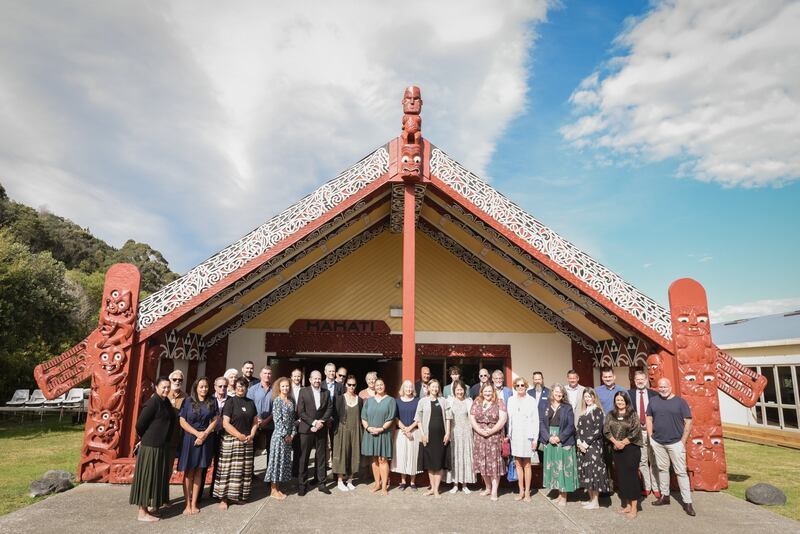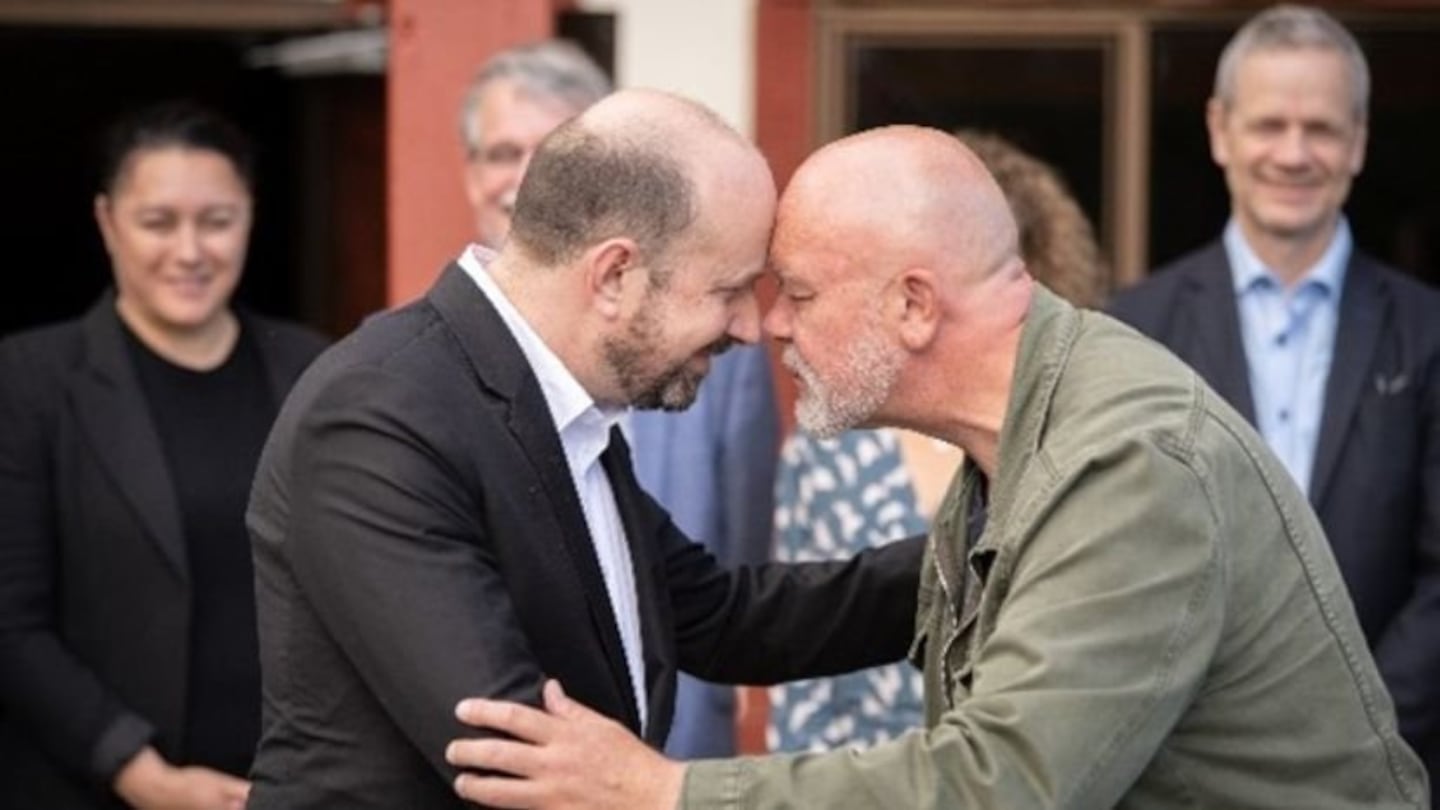Lars Holmegaard (left) and Rōpata Taylor (right). Photo courtesy of Wakatū Incorporation. Photographer / Melissa Banks
Hapū and iwi at the northern tip of Te Waipounamu have teamed up with a Danish climate resilience centre to develop efficient responses to climate change.
The principles of the collaboration agreement - signed on Tuesday evening between world-leading climate resilience centre Lemvig Klimatorium, hapū-owned business Wakatū Incorporation, Ngāti Rārua Te Ātiawa Iwi Trust and Nelson City Council - follows a May 2020 memorandum of understanding, which committed to exploring how knowledge could be shared in the areas of housing, climate and water infrastructure, services and management, innovation parks, green investment, and land-use opportunities.
The memorandum also pledged to further investigate establishing a climatorium, a world-leading centre for climate resilience partnership for the southern hemisphere in Whakatū.
Wakatū Incorporation director and AuOra general manager Miriana Stephens said the journey with the Danes began in 2017 when Wakatū first began to look offshore at who else was providing leadership when it came to the wellbeing of te taiao – the natural world.
That search led to the second lowest-lying country in Europe, Denmark, more specifically the central region of Lemvig, home to the Lemvig Klimatorium - a ground-breaking model which enables private businesses, government, community, and research institutions to collaborate on finding solutions to climate and water-related challenges.
“Denmark has one goal for their country – and that is to be fossil-fuel free by 2050. Their research, their planning and design, their education, it is all geared toward achieving that goal,” Stephens said.
“There is a lot to learn from Denmark’s response to climate change – how do you start to think about those challenges, how do you put together those solutions, how do you work with your community, local and central government, researchers, business, and how do you bring everybody working in silos together for action, rather than talk.”

Tūpuna Pono Pōwhiri - Photo courtesy of Wakatū Incorporation. Photo / Melissa Banks
Parts of Nelson, Marlborough and Tasman districts are still feeling the effects of major storms in July 2021 and August 2022, while parts of the North Island are still cleaning up after the recent cyclones that caused widespread damage to homes and infrastructure.
Wakatū Incorporation chair Johnny McGregor said a climatorium for the southern hemisphere was a project with significance for all New Zealanders.
“It’s a kaupapa that affects all New Zealanders, all people in our rohe, all people in Denmark, and actually all people in the world. Not only does it affect all people in the world, but it also affects future generations to come. And that is why we have to act as tūpuna pono, good ancestors, right now.”
McGregor said one of the leading aspects of the project was it was about taking action.
“The obligation is to act and really do something about climate resilience. That is what motivates us, and we are looking for collaborators who will support that and who will support us moving these things forward.”
Stephens said work was underway on a proposal for the climatorium, with further details expected to be released mid-year.
The delegation from the Lemvig Klimatorium will be in Whakatū Nelson until Friday. After attending a Tūpuna Pono summit convened by Wakatū Incorporation on Tuesday, the rest of the week is being spent discussing climate mitigation and adaption opportunities and joint projects.
Earlier this week, the United Nations Intergovernmental Panel on Climate Change (IPCC) released its latest climate report, which UN chief Antonio Guterres labelled a “survival guide for humanity”.
“Humanity is on thin ice – and that ice is melting fast,” UN Secretary-General Guterres said.
“Our world needs climate action on all fronts – everything, everywhere, all at once.”




